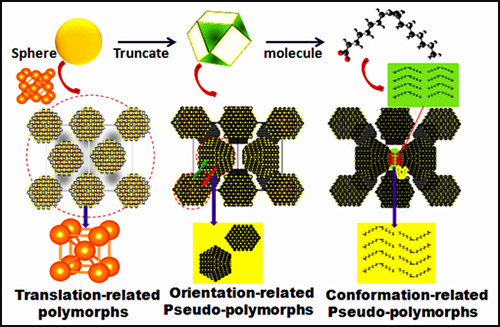X-RAY RUNS: Apply for Beamtime
2017 Nov 1 - Dec 21
2018 Feb 7 - Apr 3
2018 Proposal/BTR deadline: 12/1/17
2018 Apr 11 - Jun 4
2018 Proposal/BTR deadline: 2/1/18
Modern crystallography can be tracked back to Max Laue who conceived the first diffraction of x-ray by a crystal lattice in 1913. Upon public release of the Laue pattern collected from several crystals, Albert Einstein immediately labeled this work as one of the most beautiful experiments in physics. As an innovative tool for exploiting matter with atomic precision, X-ray based crystallography served as ways to solve the scientific controversies such as the molecular ordering of planar benzene, the existence of ionic crystals and the determination of complex macromolecular structures.
The first use of X-ray technique in nanoscience began with building the correlation of powder diffraction to the size of colloidal particles by Paul Scherrer after his original finding on the x-ray diffracting ability of LiF powders in 1916. Upon concurrent discovery of colloidal nanoparticles in United States and Russia 30 years ago, X-ray based pair distribution function approach, initially aimed at investigation of amorphous and glass materials, was lately used to exploit the surface structures of nanocrystals. In parallel, small angle X-ray scattering emerged as a complementary tool towards uncovering the interactions and ordering of nanocrystals.
Nanocrystals exist everywhere in our daily life, and emergent researches pervade in the interdisciplinary intersection of branches of science and engineering. Unprecedented boosting of nanosciences after 100 years of x-ray use needs to truly appreciate large facilities which offer sophisticated tools to tailor the structure-property diagrams of nanomaterials in static and dynamic environments. However, a gap appears to disconnect single crystal with powder x-ray diffractions, making inaccessible of how nanocrystals interact with surface-coating molecules, self-assembly into periodic order and thus grow into mesoscale organic-inorganic composites. Such a missing linkage limits programmable design and controlled fabrications of nanocomposites with increased structural complexity and functionality which hold both the size-related confining and coupling-enabled collective properties.
One research team at Cornell, led by staff scientist Zhongwu Wang at the Cornell High Energy Synchrotron Source (CHESS), combined joint forces and developed the unique synchrotron-based single supercrystal x-ray scattering technique. This unique technique is capable of performing simultaneous collection of small angle and wide angle x-ray scattering (SAXS and WAXS) images from small volume of samples. In parallel, the team employed truncate PbS nanocrystals with diameter of 11.3 nm, which are terminated at surfaces by six {100} and 8 {111} facets and coated by oleic acid molecules, and grew nanocrystals from judicious solvents into large single supercrystal. These supercrystals are on the order of several hundred microns, and each individual grain holds full coherence of nanocrystal translation and atomic orientation ordering. After loading of the sample on the stage, several sets of SAXS and WAXS images were simultaneously collected from individual single supercrystal grains with typical crystallographic orientations, providing enough information for precise reconstruction of the superstructure and interface structure of nanocrystal assembles at atomic to nanometric level.

Single supercrystal SAXS images reveal that nanocrystals pack into a face-centered-cubic (fcc) lattice which consist of the corner and face-center positioned nanocrystals. However, single supercrystal WAXS images provide us an unexpected configuration in which truncate nanocrystals orient distinctly at corner and face center, rather than packing in either a random or same oriented lattice. This observation is quite similar to the spin order change of materials tuned by application of magnetic field. The team took account on position switch of truncate nanocrystals with distinct shape orientations at corner and face-center, analyzed identical sets of SAXS and WAXS images, and derived the two shape-related pseudo-polymorphs of superlattice.
Accordingly, the lattice reduces in symmetry from original Oh (spherical) to C4h and C2h (truncate shape), respectively. Coordinating the local order and conformation variation of surface-coating molecules at NC/NC interfaces, the team came a bit further and dramatically expanded the superlattice phase diagram with members of conformation-related pseudo-polymorphs. The structure analyses allowed us to draw the first preliminary image towards understanding how nanocrystals change in size, shape, composition and surface decoration, and interact with different solvents in variable environments, and develop into a new generation of prototype materials with much complex structures and enhanced functionalities for applications.

The researchers now plan to look at nanocrystal assemblies in the time-related dynamic domains, and also expand works from shape-related single nanocrystals to binary anisotropic systems and other more complex nanocrystal assembles. “With upgrade of x-ray sources through installation of undulator at CHESS, we will use the developed protocol for large scale fabrication of supercrystal and X-ray based techniques only available in our labs at CHESS, and aim to construct the superlattice phase diagrams with increased complexity and enhanced functionality. In addition, we will combine in-situ spectroscopic techniques with our x-ray techniques to build a series of structure–property relations of confined nanocrystals with different sizes, shapes and compositions.” said by Wang.
This work involves other several colleagues at Cornell University, including the leading author Ruipeng Li at CHESS, Kaifu Bian and Tobias Hanrath at Department of Chemical and biomedical engineering, and William Bassett at Department of Earth and atmospheric Sciences. The full story is currently presented at Journal of the American Chemical Society.
Reference:
[1] Ruipeng Li, Kaifu Bian, Tobias Hanrath, William A. Bassett and Zhongwu Wang, "Decoding the superlattice and interface structure of truncate PbS nanocrystal-assembled supercrystal and associated interaction forces", Journal of the American Chemical Society, ASAP, DOI: 10.1021/ja5057032 (2014).
Submitted by: Zhongwu Wang, CHESS, Cornell University
08/26/2014
